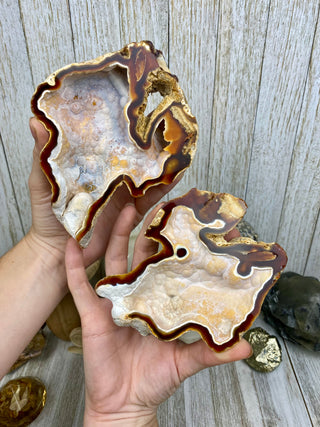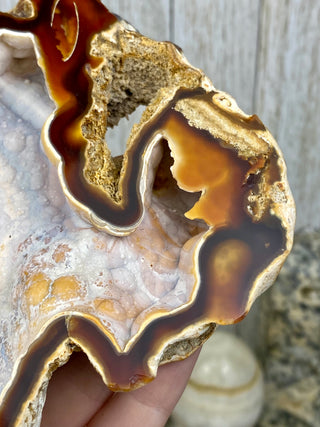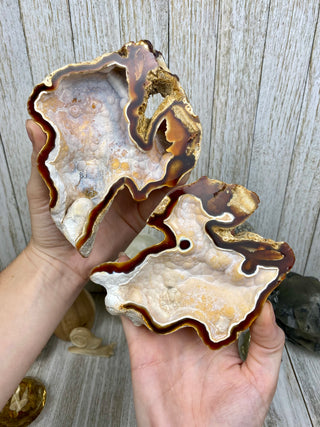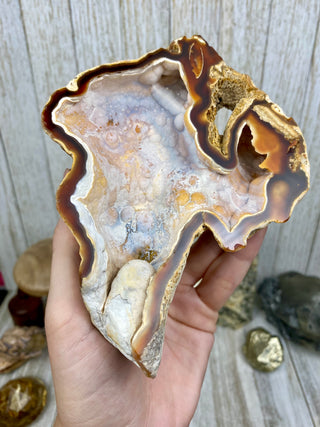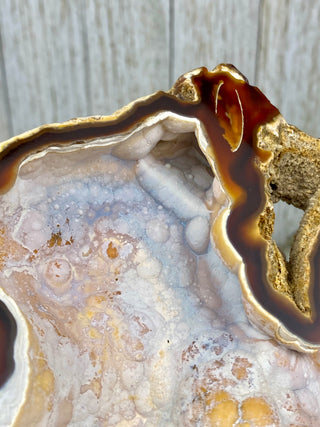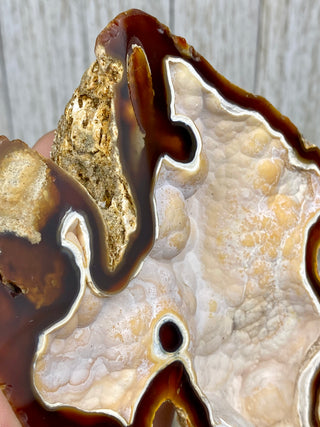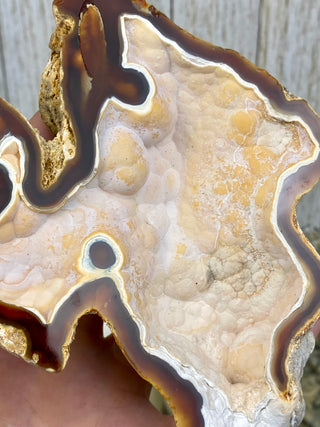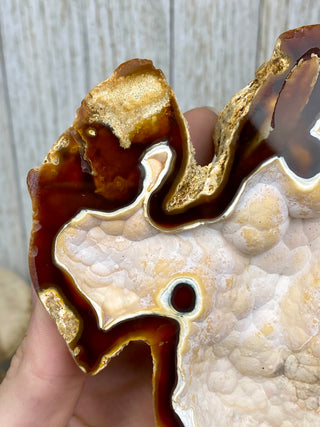The transformation of coral into agatized coral begins with the death of the coral polyps, leaving behind their hard, calcium-carbonate-based skeletons. The coral skeletons become buried in sediment, which helps to protect them from degradation. Over time, minerals such as agate, calcite, or silicate replace the calcium carbonate that composes the coral's structure. This replacement not only preserves the intricate details of the ancient coral but also imparts a distinctive banded appearance to the resulting stone, known as agatized coral.
In Tampa, Florida, agatized coral, designated as the state stone, offers a glimpse into the distant past, dating back approximately 38 to 25 million years during the Oligocene-Miocene period. These fossils, primarily of the Montastrea species, are discovered in ancient seabeds where silica-rich groundwater has flowed through, methodically replacing the original calcium with silica and leaving behind ornately patterned fossils. The array of colors in these agatized corals, including shades of white, gray, brown, black, yellow, and red, is due to different trace minerals within the agate. This variety adds to the allure of these fossils, making them highly coveted by collectors. Found in locations such as the Tampa Bay area near Ballast Point and further north along the Withlacoochee River in Madison County, these fossils are scientifically significant and aesthetically pleasing, capturing the attention of enthusiasts and researchers alike.
The transformation of coral into agatized coral begins with the death of the coral polyps, leaving behind their hard, calcium-carbonate-based skeletons. The coral skeletons become buried in sediment, which helps to protect them from degradation. Over time, minerals such as agate, calcite, or silicate replace the calcium carbonate that composes the coral's structure. This replacement not only preserves the intricate details of the ancient coral but also imparts a distinctive banded appearance to the resulting stone, known as agatized coral.
In Tampa, Florida, agatized coral, designated as the state stone, offers a glimpse into the distant past, dating back approximately 38 to 25 million years during the Oligocene-Miocene period. These fossils, primarily of the Montastrea species, are discovered in ancient seabeds where silica-rich groundwater has flowed through, methodically replacing the original calcium with silica and leaving behind ornately patterned fossils. The array of colors in these agatized corals, including shades of white, gray, brown, black, yellow, and red, is due to different trace minerals within the agate. This variety adds to the allure of these fossils, making them highly coveted by collectors. Found in locations such as the Tampa Bay area near Ballast Point and further north along the Withlacoochee River in Madison County, these fossils are scientifically significant and aesthetically pleasing, capturing the attention of enthusiasts and researchers alike.
